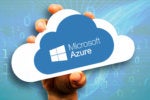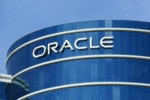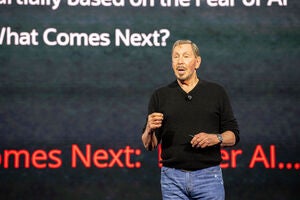Product News

Kinetica offers its own LLM for SQL queries, citing security, privacy concerns
Kinetica's self-developed large language model, designed to enable SQL queries from natural language prompts in its relational database, targets security-sensitive customers including US government defense organizations.

Teradata adds ask.ai generative AI assistant to VantageCloud Lake
Enterprises will be able to use the ask.ai natural language assistant to ask questions about their data from within Teradata’s multicloud analytics platform.

InfluxDB Clustered targets on-premises time-series database deployments
InfluxDB Clustered is an open source, distributed time-series database alternative to InfluxDB Enterprise that has been built on the company’s next-generation time-series engine that supports SQL queries.

Splunk’s new AI tools aim to ease security, observability tasks
The AI tools introduced at the company’s .conf2023 include the Splunk AI Assistant, Splunk Machine Learning Toolkit 5.4, Splunk App for Anomaly Detection, and the Splunk App for Data Science and Deep Learning 5.1.

How Databricks is adding generative AI capabilities to its Delta Lake lakehouse
The Delta Lake updates aim at helping data professionals create generative AI capabilities for their enterprise with foundation models from MosaicML and Hugging Face, among others.

Snowflake updates target generative AI demand from enterprises
While Snowpark Container Services and an Nvidia partnership will help enterprises manage large language models, Streamlit and Git updates are squarely aimed at easing developers’ tasks.

MongoDB Atlas updates focus on simplifying developer tasks
Updates include support for additional programming languages on AWS, easier installation of Atlas’ Kubernetes Operator, and a new Kotlin driver.

MongoDB adds vector search to Atlas database to help build AI apps
In addition to integrating Google Cloud’s Vertex AI foundation models, MongoDB is adding features aimed at making Atlas a complete developer data platform.

Databricks takes on Snowflake, MongoDB with new Lakehouse Apps
Databricks has also updated its Marketplace to allow enterprises to share AI models while monetizing them, the company said.

DataStax adds Schema GPT Translator to Apache Pulsar-based Astra Streaming
The new Schema GPT Translator is designed to free developers to focus on other aspects real-time data pipelines instead of coping with the time-consuming process of manually creating schema mappings.

Microsoft offers Azure ML data import CLI, SDK for Snowflake, other databases
The new integration, which is in public preview, is designed to bring data into Azure’s ML service from data repositories outside the Azure platform.

Snowflake acquires Neeva to add generative AI-based search to Data Cloud
Neeva, which uses large language models to offer an AI-based search experience, is the latest company to be picked up in Snowflake's acquisition spree.
![A user reviews data and statistical models. [analytics / analysis / tracking / monitoring / logging]](https://images.idgesg.net/images/idge/imported/imageapi/2022/04/21/11/user_reviews_data_tracking_monitoring_analytics_event_logging_analysis_threat_detection_by_laurence_dutton_gettyimages-1170687091_2400x1600-100855964-small.3x2-100925148-small.3x2.jpg?auto=webp&quality=85,70)
DataStax taps ThirdAI to bring generative AI to its database offerings
The partnership will see the Apache Cassandra-based database take advantage of ThirdAI’s Bolt technology to achieve better AI training performance on CPUs.

Google’s Vertex AI machine learning platform gets generative AI tools
The new updates to Google Cloud’s machine learning service will help the company square up against rivals such as Microsoft, AWS and IBM.

How Oracle is taking on AWS, Snowflake with Autonomous Data Warehouse updates
The updates include a 75% cut in storage pricing, a new low-code Data Studio, and adoption of Databricks’ open source Delta Sharing protocol and Apache Iceberg.

AWS' Bedrock offers foundation models to build generative AI apps
The new AWS cloud service, Amazon Bedrock, is designed to let enterprises select foundation models for building their own generative AI applications for targeted use cases and commercial use.

Splunk adds new security and observability features
New security and observability features will be added to Splunk Mission Control and its Observability Cloud to identify threats and incidents more efficiently, the company said.








